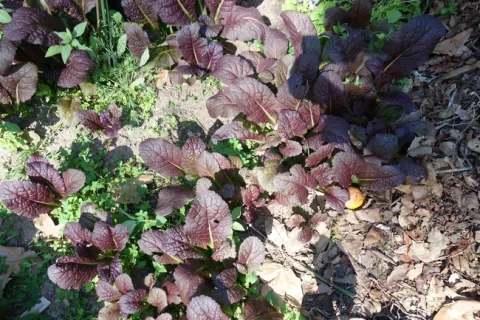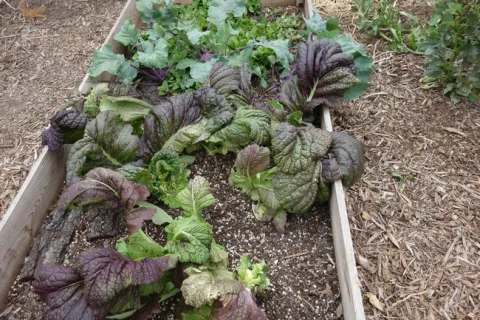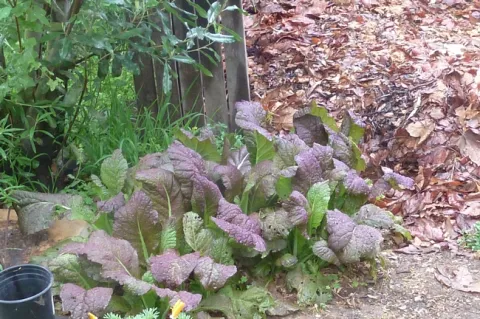Photos by Florence Nishida

What is there not to like about Osaka Purple Mustard? Nothing! Delicious and unique in flavor, highly productive, and beautiful, it has been in my garden for years.
Is it easy to grow? Yes! A few seeds dropped on the earth, and it almost plants itself while your back is turned. From last spring or summer's crops, new plants quickly turn up in Jan/Feb (or even October!). It germinates well, and grows happily even in clay soil. As an open-pollinated plant which self-sows easily, once planted, it will reliably be part of your garden forever.
Is it pretty? No, it is gorgeous! It has stunning, huge (15” or more in length), billowy, savory-textured, striking deep violet-purplish and green leaves with lime-green veins and stems. The whole plant looks like an enormous bouquet of deep, rich colors.
Does it get pests? No! This is the most pest-free vegetable in the garden – no aphids, no Bagrada bugs(!), no grasshoppers, and rarely, the Cabbage butterfly larva. The hot flavor is likely a deterrent to plant chewers.
Is it tasty? Easy to cook? Yes! If you love chillies, you will love Osaka Purple. After a 3 second lag, a bite of the raw leaf will heat your mouth with a Wasabi-like taste, but with more flavor. A generous leaf, folded in half, layered into a hamburger, ham sandwich, or shredded into egg or tuna sandwich, will enliven the sandwich, making yellow mustard unnecessary. Tossed in a green salad, it provides zing and color. Strangely, when cooked, the hot flavor becomes a milder, mustard-green taste and makes a great addition to braises with other greens, pork, chicken, or beef. In Asia, it is frequently made into tasty pickles.
Does it last long? Yes! In my garden this year, I harvested for 12 months, as seeds self-sowed. And any given plant will grow from October/November into spring and into late summer. Harvest in the cut/grow again manner, where you snap off the largest leaves, and keep new leaves continuously growing.



